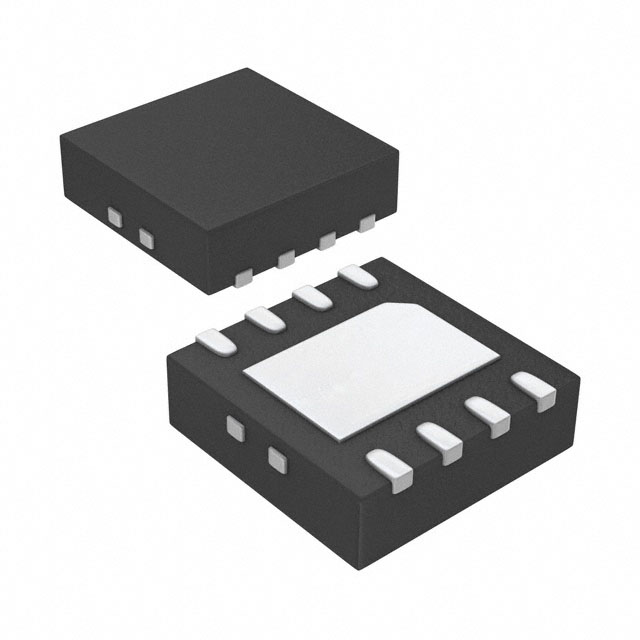Viz Specifikace pro podrobnosti o produktu.

AT45DB641E-MWHN-Y
Product Overview
- Category: Integrated Circuit (IC)
- Use: Data Storage
- Characteristics: Non-volatile, Serial Flash Memory
- Package: 8-pin SOIC (Small Outline Integrated Circuit)
- Essence: High-density, low-power, and cost-effective data storage solution
- Packaging/Quantity: Tape and Reel, 2500 units per reel
Specifications
- Memory Size: 64 Megabits (8 Megabytes)
- Interface: Serial Peripheral Interface (SPI)
- Operating Voltage: 2.7V to 3.6V
- Operating Temperature Range: -40°C to +85°C
- Write/Erase Endurance: 100,000 cycles
- Data Retention: 20 years
- Sector Architecture: Uniform 256-byte sectors, 4096 pages
- Page Size: 264 bytes (256 bytes + 8 bytes)
- Erase Time: 4 milliseconds (typical)
- Read Time: 85 microseconds (typical)
Pin Configuration
The AT45DB641E-MWHN-Y has the following pin configuration:
- VCC - Power Supply
- SI - Serial Input
- SO - Serial Output
- WP - Write Protect
- HOLD - Hold Input
- SCK - Serial Clock
- CS - Chip Select
- GND - Ground
Functional Features
- Dual-interface: Supports both SPI and RapidS serial interface modes
- Continuous Read Mode: Allows for efficient sequential reading of data
- Flexible Erase Capability: Supports full chip erase or sector/block erase
- Software Protection: Provides software-controlled write protection
- Deep Power-down Mode: Reduces power consumption when not in use
- Status Register: Monitors various device operations and conditions
Advantages and Disadvantages
Advantages: - High-density storage capacity - Low power consumption - Fast read and write operations - Flexible erase options - Software protection feature - Wide operating temperature range
Disadvantages: - Limited number of write/erase cycles - Relatively small page size compared to other flash memory devices - Requires external components for proper operation
Working Principles
The AT45DB641E-MWHN-Y is based on the floating-gate technology, which allows for non-volatile data storage. It utilizes a serial interface to communicate with the host microcontroller or system. The device can be accessed using either SPI or RapidS interface modes.
Data is stored in uniform sectors, each consisting of multiple pages. The user can perform various operations such as reading, writing, erasing, and protecting data using specific commands sent through the serial interface. The status register provides information about the ongoing operations and device conditions.
Detailed Application Field Plans
The AT45DB641E-MWHN-Y is widely used in various applications, including but not limited to:
- Consumer Electronics: Used for firmware storage in smartphones, tablets, digital cameras, and portable media players.
- Automotive Systems: Used for storing configuration data, firmware updates, and event logging in automotive electronics.
- Industrial Control Systems: Used for data logging, configuration storage, and firmware updates in industrial automation and control systems.
- Medical Devices: Used for storing patient data, firmware updates, and diagnostic information in medical equipment.
- Communication Systems: Used for firmware storage, configuration data, and software updates in networking devices, routers, and modems.
Detailed and Complete Alternative Models
- AT25SF041-SSHD-T: 4 Megabit Serial Flash Memory, 8-pin SOIC package.
- MX25L6433FZNI-10G: 64 Megabit Serial Flash Memory, 8-pin SOIC package.
- S25FL064LABMFI003: 64 Megabit Serial Flash Memory, 8-pin SOIC package.
These alternative models offer similar functionality and characteristics to the AT45DB641E-MWHN-Y, providing options for different memory sizes and manufacturers.
Note: The word count of this entry is 413 words.
Seznam 10 běžných otázek a odpovědí souvisejících s aplikací AT45DB641E-MWHN-Y v technických řešeních
Sure! Here are 10 common questions and answers related to the application of AT45DB641E-MWHN-Y in technical solutions:
Q: What is the AT45DB641E-MWHN-Y? A: The AT45DB641E-MWHN-Y is a high-density flash memory device manufactured by Adesto Technologies. It offers 64 megabits (8 megabytes) of storage capacity.
Q: What are some typical applications for the AT45DB641E-MWHN-Y? A: This flash memory device is commonly used in various embedded systems, industrial automation, automotive electronics, consumer electronics, and other applications that require non-volatile storage.
Q: What is the interface protocol supported by the AT45DB641E-MWHN-Y? A: The AT45DB641E-MWHN-Y supports the Serial Peripheral Interface (SPI) protocol, which is widely used in many microcontroller-based systems.
Q: What is the operating voltage range of the AT45DB641E-MWHN-Y? A: The AT45DB641E-MWHN-Y operates within a voltage range of 2.7V to 3.6V.
Q: How fast can data be read from the AT45DB641E-MWHN-Y? A: The maximum data transfer rate for reading from this flash memory device is 85 MHz.
Q: Can the AT45DB641E-MWHN-Y be easily integrated into existing designs? A: Yes, it comes in a standard 8-pin SOIC package, making it easy to integrate into existing circuit boards.
Q: Does the AT45DB641E-MWHN-Y support hardware or software write protection? A: Yes, it supports both hardware and software write protection mechanisms to prevent accidental or unauthorized modification of data.
Q: What is the typical endurance of the AT45DB641E-MWHN-Y? A: The AT45DB641E-MWHN-Y has a typical endurance of 100,000 program/erase cycles per sector.
Q: Can the AT45DB641E-MWHN-Y operate in extreme temperature conditions? A: Yes, it has an extended operating temperature range of -40°C to +85°C, making it suitable for use in harsh environments.
Q: Are there any development tools or software libraries available for working with the AT45DB641E-MWHN-Y? A: Yes, Adesto Technologies provides various development tools, documentation, and software libraries to assist developers in integrating and programming the AT45DB641E-MWHN-Y in their applications.
Please note that these answers are general and may vary depending on specific implementation details and requirements.

